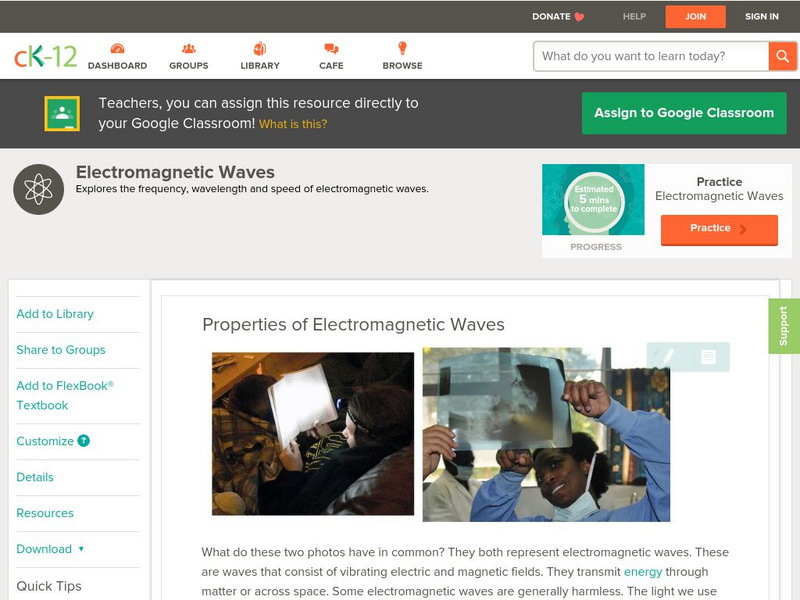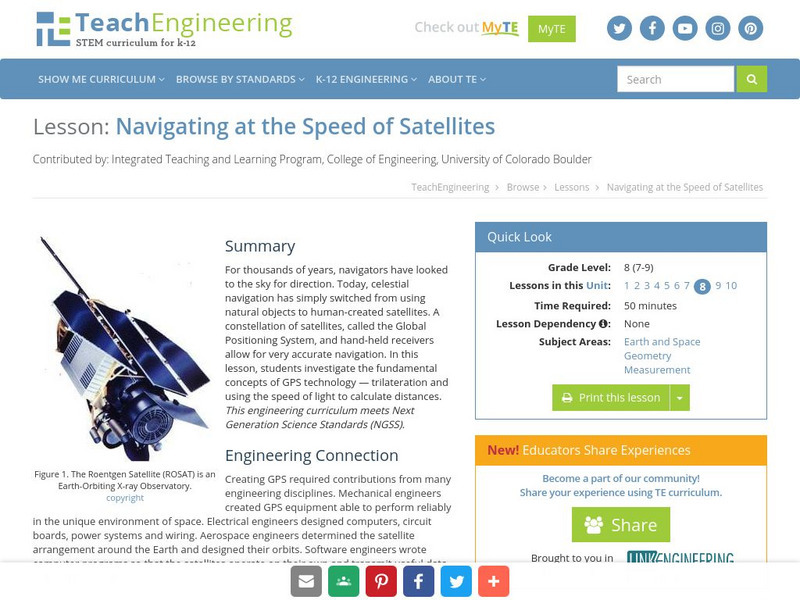Hi, what do you want to do?
Curated OER
The Math Reaction
Learners use the reaction time to figure out problems. They use the following example to get them started with reaction time: the edge of a ruler is placed near a person's thumb and index finger and, without warning, the ruler is...
Curated OER
The Way Things Fall
Students see that light and heavy objects fall at the same rate, as established experimentally by Galileo. They see that falling objects, and balls rolling down an incline, tend to accelerate at a constant rate a. Their velocity...
Curated OER
Distance Formula
Students calculate the distance formula. In this geometry lesson, students find the distance between two points on a coordinate plane. They identify the four different quadrants.
Curated OER
The Way Things Fall
Students explore concept of acceleration and motion under the influence of gravity, starting with free fall and ending with motions that start out with both horizontal and vertical initial velocities.
Curated OER
Astronomical Scales
Young scholars describe the different units of measurement. In this space science lesson, students calculate astronomical distances using a scale. They explain the significance of using scientific notation in expressing very small...
Curated OER
Finding Jupiter's Moons
Students explore Jupiter's Moons. They calculate and predict the location of Jupiter's 4 large moons. In addition, they draw Jupiter with its moons correctly shown for the time of the observation.
Discovery Education
Sonar & Echolocation
A well-designed, comprehensive, and attractive slide show supports direct instruction on how sonar and echolocation work. Contained within the slides are links to interactive websites and instructions for using apps on a mobile device to...
Curated OER
Understanding Thunderstorms
For this thunderstorm worksheet, students read about thunder and lightning and the forces behind both. They also read about the timing difference between thunder and lightning. Students answer three critical thinking questions about...
Physics Classroom
Action-Reaction Lab
Computer-interfaced motion detectors are required to carry out this inquiry. It is a new twist on exploring motion with plunger carts: they are set back-to-back and then propelled away from each other. Their velocities are measured, and...
Curated OER
It's About Time
Students investigate how Global Positioning Systems work and how and why GPS receivers make errors. They graph data points and apply estimation and prediction to real-life GPS situations, discuss time delay, and complete a worksheet.
Curated OER
Black Holes... What's inside IX
In this space science worksheet, students solve 7 problems related to black hole space and time. They answer questions related to the spacetime dimension.
Curated OER
Sound Waves Simulation Worksheet
In this sound wave worksheet, students go to http://phet.colorado.edu/new/simulations/sims.php?sim=Sound and run the simulation to complete 28 short answer question.
Curated OER
Weighted Averages
Weighted averages can be tricky to explain! However, this study guide makes it easy for teachers by including definitions, explanations, and breaking down problems into three steps. Includes mixture problems and uniform motion problems.
Curated OER
Control and Experimental Variables
In this variables in experiments worksheet, students read about control variables and experimental variables before they respond to 15 graphic organizer and short answer questions.
Curated OER
Sixth Grade Science Test
For this science instructional activity, 6th graders take a multiple choice quiz about properties, energy, formulas, and more. Students complete 30 questions total.
Curated OER
Quiz: Weather Phenomena #1
In this science worksheet, 3rd graders focus on the weather. Students respond to ten multiple choice questions about various aspects pertaining to our weather.
Curated OER
Your Amazing Brain
In these reading comprehension worksheets, 8th graders read a passage about the brain. Students then answer 5 reading comprehension questions about the text.
Mocomi & Anibrain Digital Technologies
Mocomi: What Is the Speed of Light?
How fast does light travel? How does its speed change when it travels through different media? Learn how scientists calculate the speed of light and some interesting facts.
PBS
Pbs: Nova: Time Travel: Think Like Einstein
Addressed with questions about relative speed and the speed of light, students begin to "think like Einstein" while exploring the science behind the mystery of time travel.
BBC
Bbc: Gcse Bitesize: General Properties of Waves
Light travels as waves. Waves can be described by their amplitude, wavelength and frequency. The speed of a wave can be calculated from its frequency and wavelength.
CK-12 Foundation
Ck 12: Wave Speed Calculations
[Free Registration/Login may be required to access all resource tools.] Students investigate and analyze characteristics of waves, including velocity, and calculate the relationship between wave speed, frequency, and wavelength.
CK-12 Foundation
Ck 12: The Quantum Mechanical Model
[Free Registration/Login may be required to access all resource tools.] In the following online tutorial students will calculate the wavelength, frequency, and energy of light using Planck's constant and the speed of light. They will...
CK-12 Foundation
Ck 12: Physical Science: Properties of Electromagnetic Waves
[Free Registration/Login may be required to access all resource tools.] The speed of electromagnetic waves, their wavelengths and frequencies and how to calculate wavelength or wave frequency.
TeachEngineering
Teach Engineering: Navigating at the Speed of Satellites
For thousands of years, navigators have looked to the sky for direction. Today, celestial navigation has simply switched from using natural objects to human-created satellites. A constellation of satellites, called the Global Positioning...




























